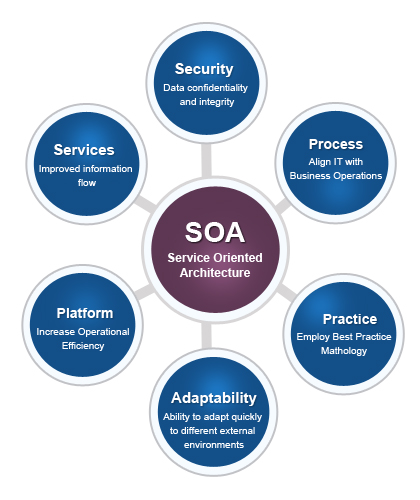
Service-oriented architecture (SOA) is an adaptable set of design principles used during the phases of systems development and integration in computing. SOA with its freely coupled nature enables organizations to plug in new services or promote existing services in a grainy manner to address the new business requirements.
Rapid acceptance of SOA is ensuing in widespread service enabling of IT systems. However, this is not the complete story—the only way to achieve IT goals of lower costs, greater efficiency, and increased visibility is through rapidly assembling these services into modular and flexible business applications.
It provides the option to make the services consumable across different channels, and exposes the existing enterprise and legacy applications as services, thereby safeguarding existing IT infrastructure investments.A system based on a SOA architecture will put together functionality as a group of interoperable services that can be utilized within a number of different systems from several business domains.
- Tremendous performance and scalability– Real-time event processing at extreme throughputs combine with the industry’s most scalable Application Grid to provide performance and reliability
- Easy and constructive development– An integrated, easy-to-use set of tools improve developer efficiency, support asset re-use, and foster business and IT developer collaboration
- Combined management and monitoring– A combined infrastructure for events and services, and cross-application back-to-back instance tracking help provide integrated governance and security















